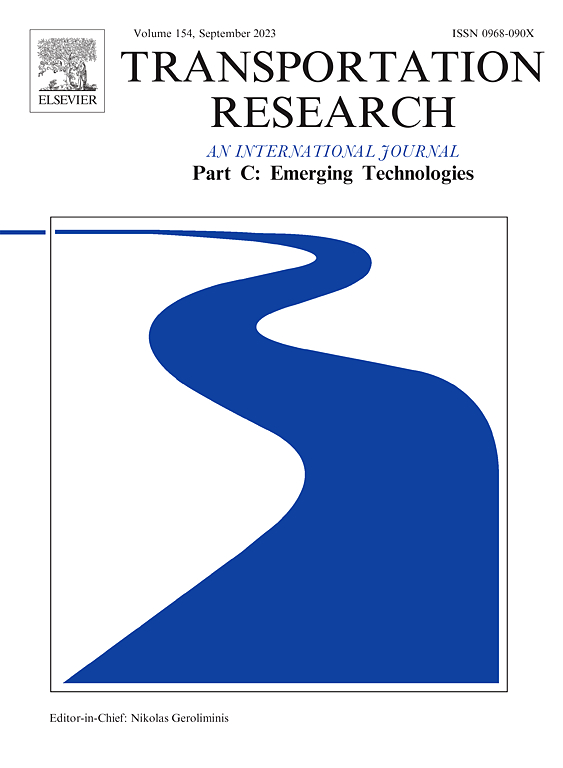Integrated demand-oriented and energy-efficiency train timetabling and rolling stock circulation planning for an urban rail transit line
IF 7.6
1区 工程技术
Q1 TRANSPORTATION SCIENCE & TECHNOLOGY
Transportation Research Part C-Emerging Technologies
Pub Date : 2025-02-01
DOI:10.1016/j.trc.2024.104993
引用次数: 0
Abstract
Saving energy has both significant environmental benefits and economic advantages. As the urban rail transit network and its consumed energy continue to expand, it is crucial to optimize the energy-saving operation scheme of trains. Energy-saving train operation often requires longer section running times, which is obviously not conducive to the quality of passenger service. In order to ensure passenger service quality when pursuing the decrease of the train’s energy consumption and rolling stocks’ operation cost, this paper proposes an integrated optimization model of the demand-oriented and energy-efficiency train timetable and rolling stock circulation plan for urban rail transit. Its objective is to minimize train net energy consumption, rolling stock utilization cost, as well as passenger waiting time and travel time. Specifically, the net energy consumption is defined as the difference between train required traction energy consumption and regenerative braking energy utilization. To efficiently solve this large-scale mixed integer nonlinear model, we design a solution algorithm combining Variable Neighborhood Search (VNS) and CPLEX, in which seven different neighborhood structures are constructed. Based on the data of Guangzhou Metro Line 13, we have verified the effectiveness and performance of the model and algorithm through numerical experiments of various scales, as well as through comparisons with other algorithms and models. The results demonstrate that the timetable and rolling stock circulation plan obtained by VNS can reduce net energy consumption by 9.55 %, rolling stock utilization cost by 9 %, and passenger waiting time by 4.77 %, and their travel time by 0.87 % compared to the current timetable.
求助全文
约1分钟内获得全文
求助全文
来源期刊
CiteScore
15.80
自引率
12.00%
发文量
332
审稿时长
64 days
期刊介绍:
Transportation Research: Part C (TR_C) is dedicated to showcasing high-quality, scholarly research that delves into the development, applications, and implications of transportation systems and emerging technologies. Our focus lies not solely on individual technologies, but rather on their broader implications for the planning, design, operation, control, maintenance, and rehabilitation of transportation systems, services, and components. In essence, the intellectual core of the journal revolves around the transportation aspect rather than the technology itself. We actively encourage the integration of quantitative methods from diverse fields such as operations research, control systems, complex networks, computer science, and artificial intelligence. Join us in exploring the intersection of transportation systems and emerging technologies to drive innovation and progress in the field.

 求助内容:
求助内容: 应助结果提醒方式:
应助结果提醒方式:


